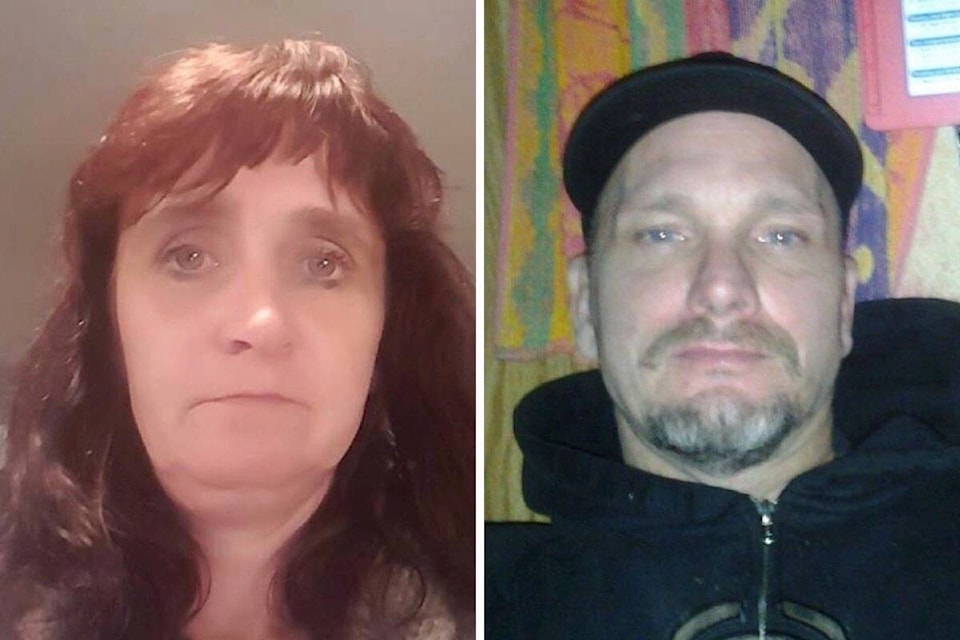Randy Crosson had ฮฺัปดซรฝdetermined, angry, rage-filled eyesฮฺัปดซรฝ in his last seconds, using his girlfriend as a shield as police fired more than 30 bullets in their direction.
Bedlam had already erupted in the small bedroom as Const. Brent Wantke followed his fellow Emergency Response Team members in. Crosson, 48, had a gun to Nona McEwanฮฺัปดซรฝs chest, she screamed, and the bullets flew. Wantke didnฮฺัปดซรฝt fire his, for fear of hitting the other ERT officers before him.
ฮฺัปดซรฝThe hostage was brought to the kitchen,ฮฺัปดซรฝ he said, for medical help. Wantke did a ฮฺัปดซรฝwet checkฮฺัปดซรฝ on Const. Darcy Rowe, to make sure he wasnฮฺัปดซรฝt hit. ฮฺัปดซรฝIt was very crowded.ฮฺัปดซรฝ
ฮฺัปดซรฝThey were in super, super tight,ฮฺัปดซรฝ he said. ฮฺัปดซรฝI couldnฮฺัปดซรฝt see the paint on the wall, thatฮฺัปดซรฝs how close they were.
ฮฺัปดซรฝI couldnฮฺัปดซรฝt say how many rounds came from who.ฮฺัปดซรฝ
At the four-minute mark into Crossonฮฺัปดซรฝs five-minute warning, the six ERT officers were authorized to go in. ฮฺัปดซรฝWe believed that the suspect was going to imminently kill the hostage,ฮฺัปดซรฝ he said. ฮฺัปดซรฝMy role was to simply save the hostage any way possible.ฮฺัปดซรฝ
Wantke had been with ERT for four months at the time.
Rowe, the second officer to enter the room, fired his gun. He too recalled the terrifying scene, testifying Friday (April 19) during a coronerฮฺัปดซรฝs inquest into the deaths of Crosson and McEwan, 45, both killed by police during the March 29, 2019 hostage-taking in the Whalley house she rented.
Coroner Margaret Janzen is presiding over the inquest in Burnaby, at Coronersฮฺัปดซรฝ Court. Itฮฺัปดซรฝs expected to run for two weeks, with a jury of four women and a man hearing testimony.
Urgency and stress were clear in Roweฮฺัปดซรฝs voice as he recounted the horror.
Smoke and debris hung in the air from the strip charge police used to blast the bedroom door open. A stream of light shone through the window onto the bed. Crosson was ฮฺัปดซรฝseated upฮฺัปดซรฝ in the darkness at the corner of the bed, with McEwan on top of him, and he was holding her around her neck.
ฮฺัปดซรฝI could see the movements of Miss McEwanฮฺัปดซรฝs hair,ฮฺัปดซรฝ Rowe said. ฮฺัปดซรฝI knew that I had to get closer.ฮฺัปดซรฝ
Crosson pointed his gun at Roweฮฺัปดซรฝs partners. ฮฺัปดซรฝI see his eyes and he has determined, angry, rage-filled, eyes as he starts pointing out towards my partners. I know now that thereฮฺัปดซรฝs a bunch of debris in the doorway which has started to tangle in my feet. Iฮฺัปดซรฝm trying to now get to that contact shot as Iฮฺัปดซรฝve seen this change. I now realize that I canฮฺัปดซรฝt get to that, but I have to do something in order to stop this threat. I believe that Miss McEwanฮฺัปดซรฝs on top of him, as the shield, I take this as a chance to twist and shoot under and hit him in such a way that it will change his behaviour. As I fire, Iฮฺัปดซรฝm starting to go down from all the debris Iฮฺัปดซรฝve been caught up in, the weight of my vest and helmet take me down, and in that instant thereฮฺัปดซรฝs a moment of fabric and everything which becomes in my view which hadnฮฺัปดซรฝt been, and I canฮฺัปดซรฝt understand what happened. At that point I come to rest on the corner of the bed.ฮฺัปดซรฝ
Multiple rounds are going off. ฮฺัปดซรฝIฮฺัปดซรฝm stuck on that corner of the bed, laying partially down against it.ฮฺัปดซรฝ
The firing stops but ฮฺัปดซรฝthe yelling and screaming and everything continues, Iฮฺัปดซรฝm grabbed, people believe Iฮฺัปดซรฝm shot.ฮฺัปดซรฝ
Rowe got pulled out of the room, taken out of the house through the front and to a vehicle. ฮฺัปดซรฝI donฮฺัปดซรฝt see what has happened and transpired within the room, I donฮฺัปดซรฝt know the status of Miss McEwan, Mr. Crosson or my teammates at that point.ฮฺัปดซรฝ
Rowe said he fired two rounds. Asked how many gunshots he heard, Rowe told the inquest ฮฺัปดซรฝdozens, there was probably more than 30 rounds firedฮฺัปดซรฝ from different firearms.
A Surrey-based police watchdog ฮฺัปดซรฝ the Independent Investigations Office ฮฺัปดซรฝ in 2020 found the ERT blameless in the shooting deaths. The standoff saw roughly two dozen police vehicles, as well as an armoured vehicle, descend on the home in a cul-de-sac near 132A Street and 100A Avenue.
Both officers were asked if the phenomenon of sympathetic fire occurred, when officers shoot because others are. ฮฺัปดซรฝNo, absolutely not,ฮฺัปดซรฝ Wantke told the jury.
Rowe said he couldnฮฺัปดซรฝt speak to what the other officers did. ฮฺัปดซรฝI know what I saw and what I reacted to, I donฮฺัปดซรฝt know what their risk assessment was at that point or what they saw, so I canฮฺัปดซรฝt speak to that, no.ฮฺัปดซรฝ
The inquest continues.



